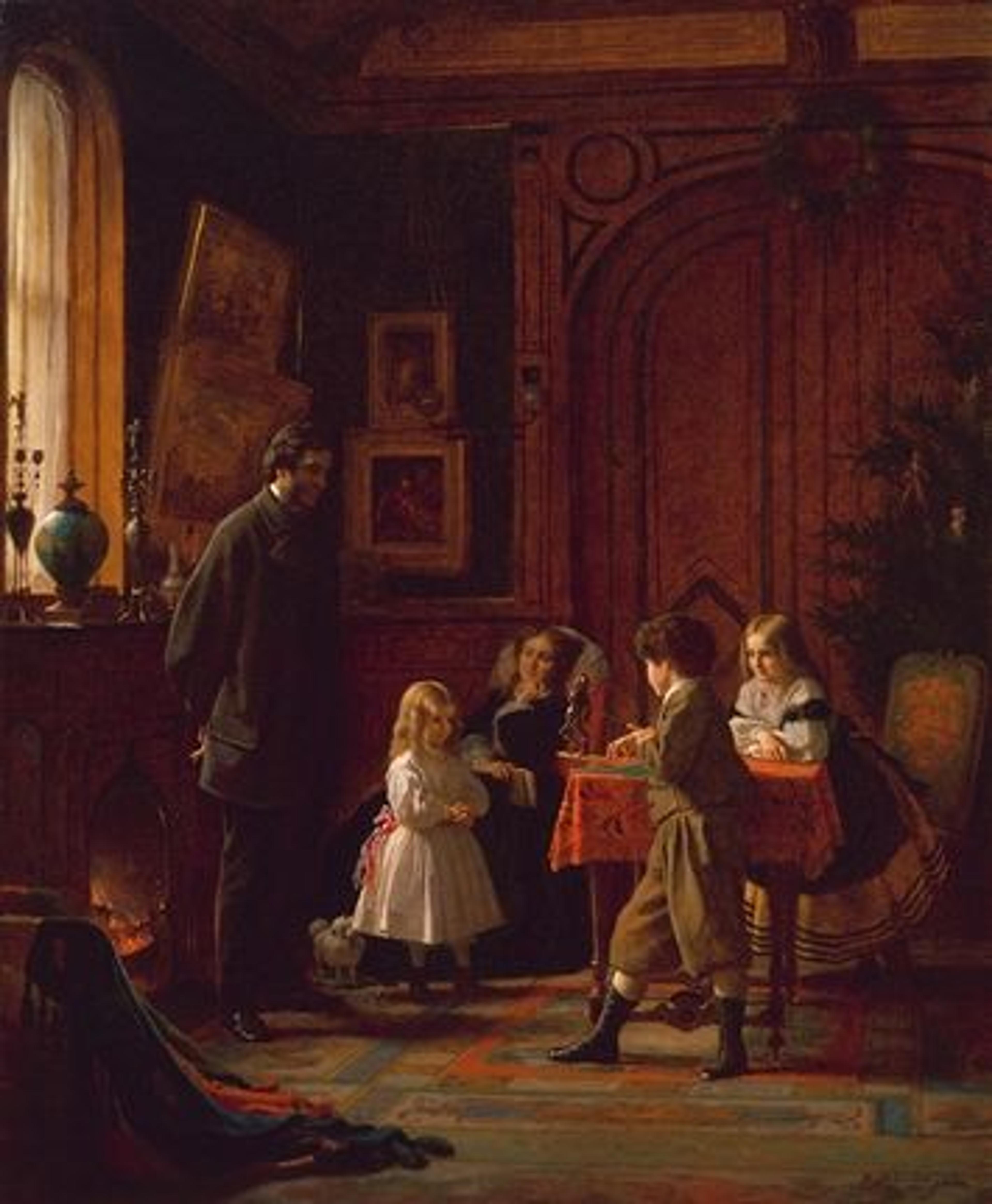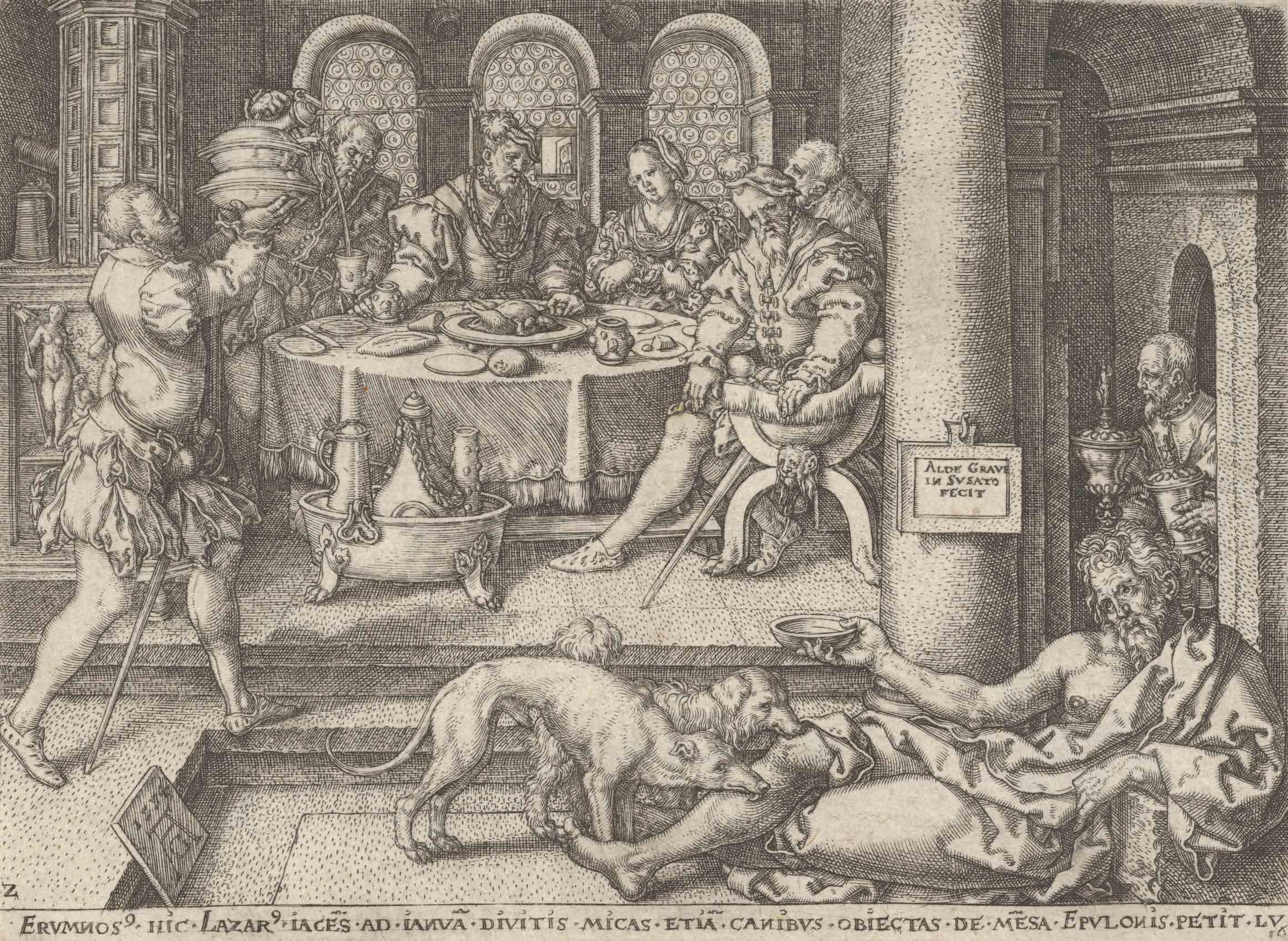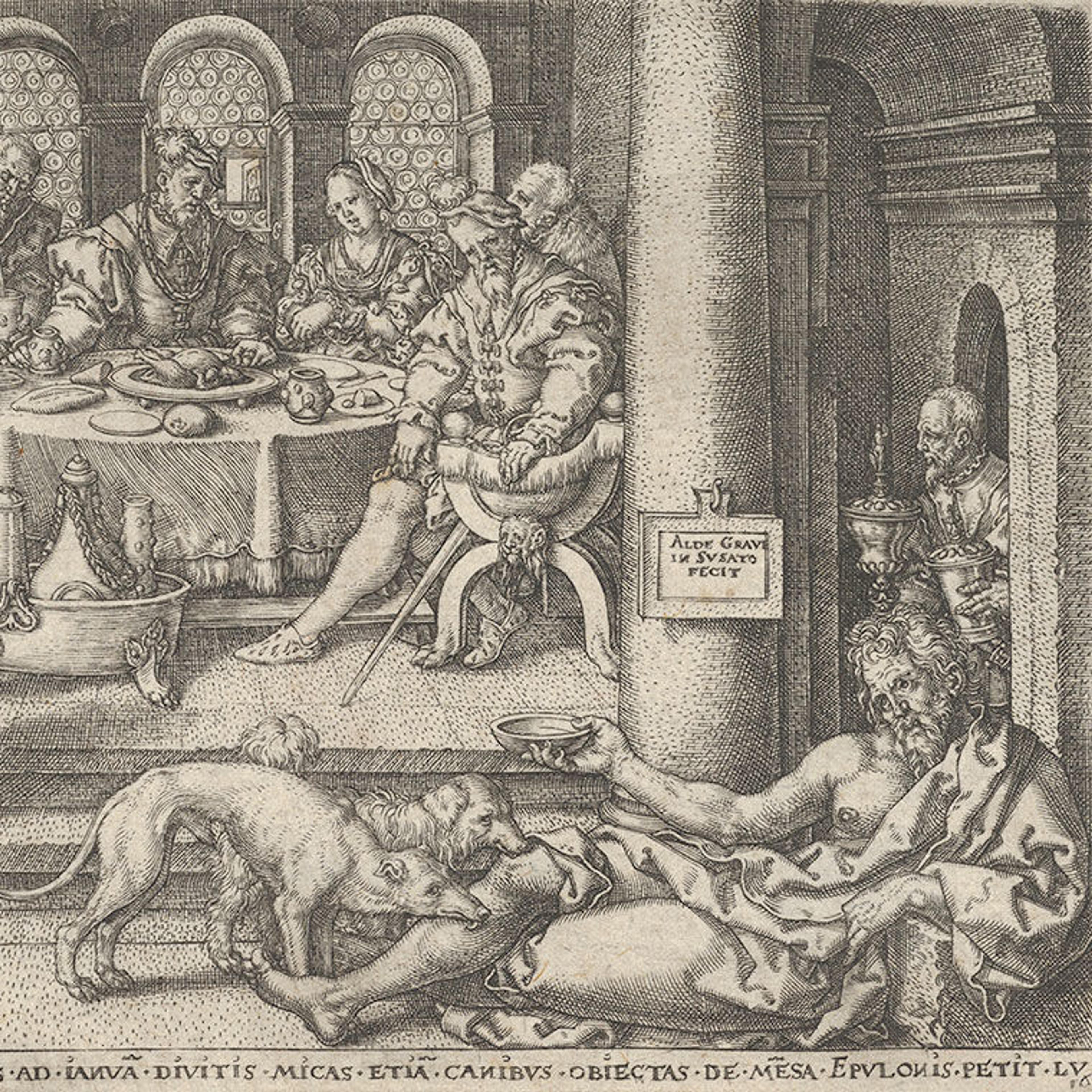
A simple way to view the varying statuses of wealth across history is by looking at how they were depicted artistically. From lavish portrayals of royals and their riches, to despondent images of financial suffering, artists have been able to skillfully capture economic and social statuses for centuries.
Left: Eastman Johnson (American, 1824–1906). Christmas-Time, The Blodgett Family, 1864. Oil on canvas, 30 x 25in. (76.2 x 63.5cm). The Metropolitan Museum of Art, New York, Gift of Mr. and Mrs. Stephen Whitney Blodgett, 1983 (1983.486)
My interest in art has always been interwoven with my interest in social issues such as the wealth gap, since so many works of art have deeper meanings and connections to societal problems. With such an overwhelming collection, The Met stands out in its ability to display thought-provoking pieces. Each piece I've chosen for this article resonated with me because of the ways in which each artist has highlighted socio-economic status.
The 1864 painting by Eastman Johnson shown above expresses the picturesque ideal of an upper-class American family during the holidays. Painted during the American Civil War, the picture represents a calm, wholesome contrast to the social upheaval taking place across the nation. Johnson paints an aspect of the "American dream": a financially secure family in an elegant home. This family is not plagued by the troubles that often come with war, or by the problems facing African Americans. Instead, this family is cozy during the holiday season, insulated in a serene home in Manhattan, unaffected by the looming racial tension, although the boy's caricatured toy alludes to the horrors of the war and slavery.

Right: Jan Steen (Dutch, 1626–1679). The Dissolute Household, ca. 1663–64. Oil on canvas, 42 1/2 x 35 1/2 in. (108 x 90.2 cm). The Metropolitan Museum of Art, New York, The Jack and Belle Linsky Collection, 1982 (1982.60.31)
Unlike the previous household, this one on the right painted by Jan Steen between 1663 and 1664 offers a more chaotic and (to me) realistic portrayal of a family home. Steen painted this with a multitude of sins in mind: sloth, gluttony, lust, and other more minor vices such as gambling and drinking. The basket hanging over the family alludes to the poverty that the family is bringing on themselves, which Steen emphasizes through several other hidden symbols. The tattered appearance of the home emphasizes the family's unglamorous status and lack of refinement, and highlights the disparity between them and a family like the Blodgetts.

Heinrich Aldegrever (German, 1502–1555/1561). Lazarus at the Rich Man's Gate, 1554. Engraving, 3 1/8 x 4 5/16 in. (8 x 11 cm). The Metropolitan Museum of Art, New York, Gift of Henry Walters, 1917 (17.37.227)
In this biblical depiction by Heinrich Aldegrever, Lazarus sits on the floor with an outstretched arm holding a bowl, begging for food, as a rich man and his guests dine on an extravagant feast. This engraving was made in 1554, and portrays Lazarus in his destitute state. Aldegrever intentionally sat him on the floor with dogs that appear to be licking his wounds, portraying him as one of them. To me, this is a most blunt depiction of economic disparity, as Lazarus cannot even dine and partake in the feast. In every society, the absence or abundance of wealth decides so much. This engraving elicits a sympathetic feeling toward Lazarus and his suffering, and disdain for the rich.
These works are just three examples of many at The Met that portray these issues, which have occupied artists for centuries.
